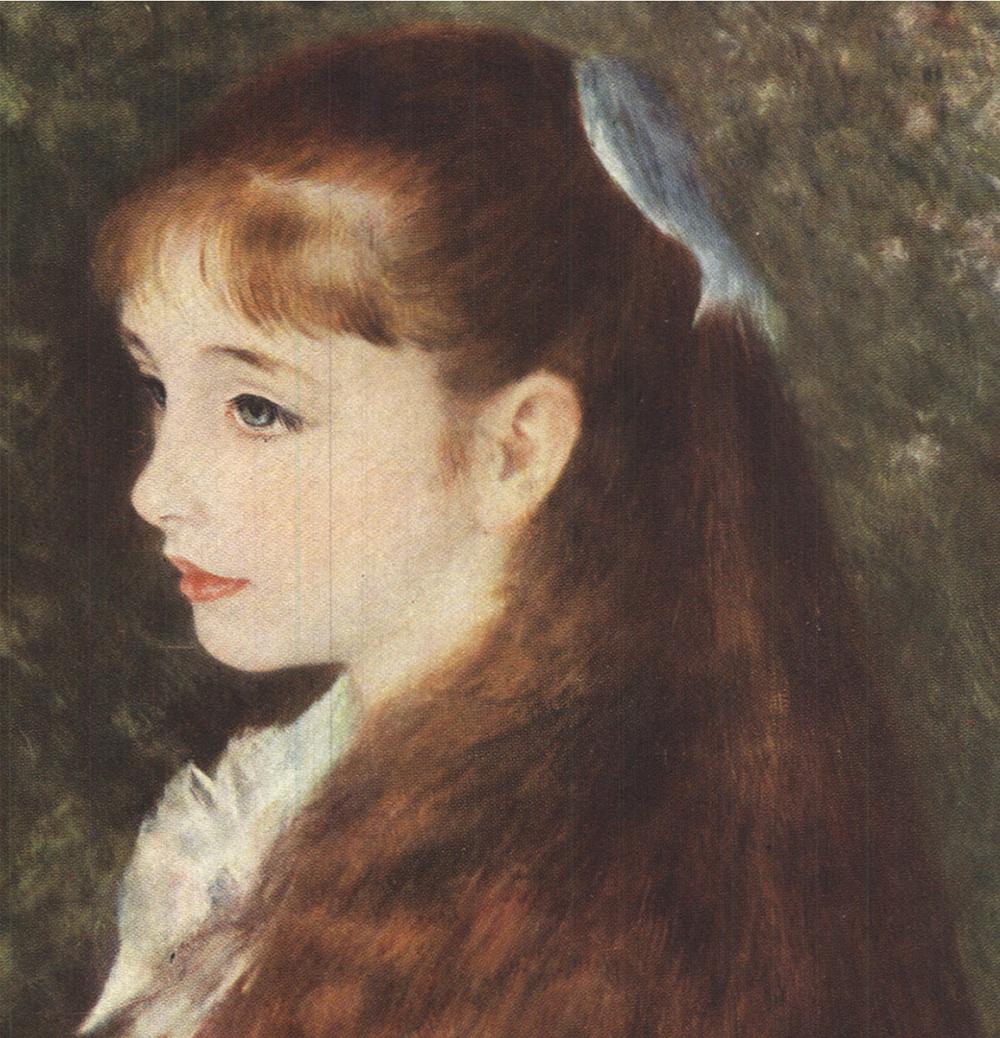Dorian Gray (1880)
John Keats wrote, “A thing of beauty is a joy forever.” While the observation holds true in poetry, in truth a thing of beauty often holds strands of sorrow, strands of evil. Pierre-August Renoir’s canvass of Irène Cahen d’Anvers interacted with France’s direst days.
Multi-millionaire Charles Ephrussi introduced his married lover, Louise, to the struggling painter, Renoir. Her husband, Louis, one of France’s wealthiest bankers, commissioned La Petite Fille au Ruban Bleu, Girl with a Blue Ribbon, that captured his eight-year-old daughter’s golden- red hair adorned with a blue ribbon that matched the color of her eyes. A second portrait, Rose Et Bleu, Pink and Blue, was of Irène’s younger sisters: Alice’s sash was pink, Elizabeth’s sash was blue. The couple claimed their chateau, the venue of the painting, had been the love lair of Louis XV and Madame de Pompadour.
At age eighteen, the beautiful heiress married the Turkey-born Count Moïse de Camondo whose family were known as “the Rothschilds of the East.” Their synagogue wedding made the pages of Le Figaro. Her dowry consisted of 1,050,000 francs, and the Renoir. The groom was blind in one eye from a hunting accident, balding, and thirteen years her senior. The couple had son, Nissim, (whose name translates to miracle,) and daughter Béatrice.
Six years after taking her vows, Irene ran off with her husband’s Italian horse trainer, Count Charles Sampieri. To marry her lover, Irene relinquished her mansion, her children, and her religion: she converted to Roman Catholicism. Humiliated by the scandalous divorce, Moïses turned his estate-tended by. Fourteen servants- near Parc Monceau into a home-gallery that held Ming vases, Louis XVI furniture, and silverware that Catherine the Great had made for her lover, Gregory Orloff. When Nissim’s plane went down over Lorraine in World War I, Möises bequeathed his estate-a shrine to his son-to France. The Musée Nissim de Camondo is currently a popular Parisienne destination. 
Béatrice married Léon Reinach with whom she had Fanny and Bertrand. During World War II, Beatrice felt immune from the encroaching anti-Semitism as her brother had died for France, her father had donated a treasure filled museum. She continued to ride her horse in the Bois de Boulogne, a yellow star pinned on her expensive jackets. More cynical than his wife, Leon took their then extremely valuable Renoir to the Château de Chambord where France hid the Mona Lisa. Herman Goering stole the portrait and traded it for a Florentine todo. Infuriated, Leon wrote a letter demanding the return of “La petite fille au ruban blue.” The answer, “Non.” His appeal caught the attention of the Nazi police chief who ordered the deportation of “the insolent Jew” along with Béatrice, Fanny, and Bertrand. After internment in Drancy, the Reinach family perished in Auschwitz. Police discovered Elizabeth’s hiding place; she died en route to the concentration camp. Alice survived the war and lived out her days in Nice.
Irene, under the name of Countess Sampieri, a Roman Catholic, also managed to fall under the Nazi radar. In 1946, Irene saw her childhood portrait in an exhibit of art salvaged art from Germany, and successfully sued for its return. Three years later, with the last of her money dissipated in the gambling tables of Monaco, she sold her birthright. Petit Irene ended up with Emil Georg Buhrle, a Swiss arms dealer who had supplied weapons to the Third Reich. At age ninety-one, Irene, once more penniless, passed away in Paris.
Pink and Blue hangs in the Sãn Paulo Museum of art in Brazil; Girl with a Blue Ribbon resides in the E. G. Buhrle Collection Museum in Zurich. The portrait that holds ugliness under its beauty is Renoir’s own version of the canvass of Dorian Gray.


